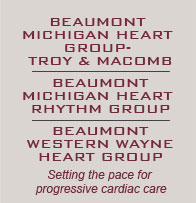

Supraventricular tachycardias are heart conditions with a fast heart rhythm and an electrical abnormality of the atria or atrioventricular node. They include atrial fibrillation, atrial flutter, atrial tachycardia, atrioventricular nodal reciprocating tachycardia or AVNRT and atrioventricular reciprocating tachycardia or AVRT. For more information on Atrial Fibrillation and Flutter, please see our other videos. This animation will focus on Atrial Tachycardia, AVNRT, and AVRT.
The heart rate is controlled by the electrical system of the heart. This system performs a sequence of events that contracts the heart muscle. The sinus node triggers the heartbeat, and causes contraction of the atria. The signal then travels to the atrioventricular node, the bundle of His, the bundle branches and the Purkinje fibers. This causes contraction of the ventricles. In atrial tachycardia, an area of electrical focus controls the heart rate instead of the sinus node, causing the heart to beat rapidly.
In atrioventricular nodal reciprocating tachycardia or AVNRT, an electrical circuit is created between the two electrical paths in the atrioventricular node, causing the heart to beat rapidly. In atrioventricular reciprocating tachycardia or AVRT, an electrical circuit involving the atria, atrioventricular node, ventricles, and an accessory electrical path, causes the heart to beat rapidly. Supraventricular tachycardias are very often responsible for early and late palpitations, and are sometimes associated with fatigue and chest pain.
ECGs can easily diagnose a supraventricular tachycardia, but cannot distinguish which kind of tachycardia it is.
As a first treatment option, antiarrhythmic medications can prevent or stop palpitation episodes.
If antiarrhythmics are ineffective or poorly tolerated, a curative radiofrequency treatment may be considered. The procedure typically lasts about 1 hour, uses local anesthesia and mild sedation, and often requires an outpatient hospital stay. A small puncture in the vein of the groin allows the catheter to access the heart.
The first part of the procedure is an electrophysiology study. It is diagnostic and determines the exact mechanism of the tachycardia. Three electrically sensitive catheters are placed inside the heart to record electrical activity. These recordings locate abnormal tissue that cause irregularities in the heartbeat. Performing radiofrequency on these abnormal areas will, in the vast majority of cases, completely cure the condition without need for medication.
Supraventricular tachycardias are rarely serious but are potentially troublesome, and many treatments exist. Talk to your doctor or cardiologist.
©2024 Medmovie.com. All rights reserved. Medmovie.com creates and licenses medical illustrations and animations for educational use. Our goal is to increase your understanding of medical terminology and help communication between patients, caregiver and healthcare professionals. The content in the Media Library is for your information and education purposes only. The Media Library is not a substitute for professional medical advice, diagnosis or treatment for specific medical conditions.